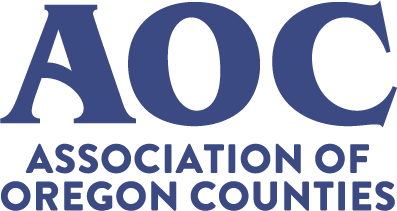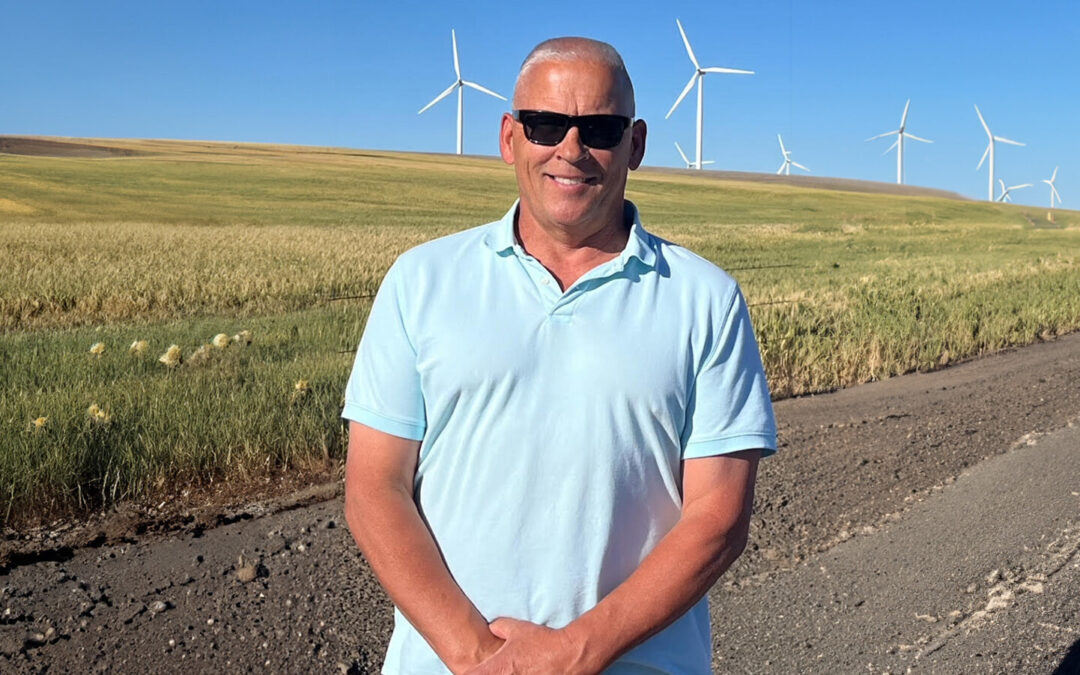Sponsored content contributed by AOC Business Partner: Community Renewable Energy Association (CREA)
Due to the threat of climate change and the need to decarbonize our sources of power, Oregon (alongside other west coast states) has adopted aggressive laws and policies to move toward electrification from renewable sources. The latest in Oregon is HB 2021 which set targets for decarbonizing the electricity supply by 2040. Oregon counties began to experience this transition firsthand around the turn of this century with the first “wind boom” on the Columbia Plateau.
Gilliam, Sherman, and Morrow counties are the leading producers of renewable energy in the state (#1 depends on what you count: Sherman is #1 if the John Day Dam is included, or if just wind and solar, Gilliam leads with Morrow gaining fast).
Now, we’re experiencing the second rush for siting projects to meet the legislative goals. For example, Sherman County, which has a little over 1259 MW of wind and solar generation capacity currently is targeted for over 15,000 MW of proposed new generation based on known requests to interconnect to the BPA grid. These projects are limited by the lack of transmission capacity which, unfortunately, has a long lead time for upgrade. The developers are often large multinational corporations with access to the immense capital needed to fund and build the projects. The customers are primarily the investor-owned utilities (IOUs) who serve the load in the population centers along the I-5 corridor. Most of rural Oregon is served by consumer owned utilities (COUs) who get their power largely or entirely from hydropower and some nuclear power.
The investor-owned utilities in Oregon subject to the requirements of HB 2021 must file with the Oregon Public Utility Commission a plan for acquiring new resources (Integrated Resource Plan or IRP and a Clean Energy Plan or CEP) and then must seek those resources either by contracting for them or building them through their Request for Proposal (RFP) solicitation. After a long period of flat load growth due to measures like conservation and some distributed generation (like rooftop solar) load growth is now increasing at over 10% a year. General electrification, the demand from new data centers and increased numbers of electric vehicles are large factors in this growth as well.
There is no requirement that these renewable energy projects to become carbon neutral by 2040 get built in Oregon. However, we’ve seen significant benefits for those counties where projects have been located. These projects grow the property tax base and provide employment opportunities and can help make the area more energy resilient in times of need. Twenty years ago Sherman and Gilliam were near the bottom in per capita income of Oregon counties, now both are near the top (Sherman 4th, Gilliam 6th in recent statistics). Counties are also able to negotiate Community Benefits Agreements (CBAs) which have become standard as a requirement for siting and in property tax incentive negotiations. These CBAs can range and are negotiated based on the needs of the local community.
The IOUs operating in Oregon are often motivated to obtain resources from other states where wind and solar resources are somewhat better and can be cheaper to build. The IOUs often cite “protecting the rate payer” as the reasoning for this strategy. But ratepayers are also taxpayers (directly or indirectly) and an increased property tax base means more revenue for schools and public safety as we have seen throughout Eastern Oregon where most of the utility scale projects are being built. Building projects out of state means Oregon will lose out on the local community benefits that include jobs, taxes, other financial agreements, and energy resiliency.
CREA, an ORS 190 intergovernmental entity, advocates on behalf of Oregon local governments and energy developers in support of policies favorable for local renewable energy development. Our members include primarily counties but also cities, irrigation districts and a port. CREA also has members from the development community who help the organization and its members understand the industry and the challenges. We try to stay abreast of new technologies and issues arising from renewable energy development such as green hydrogen, geothermal, offshore wind, nuclear and storage solution (batteries & pumped hydro).
CREA meetings are public and virtual. We welcome participation and membership from all Oregon counties and local governments.
Contributed by: Sherman County Judge Joe Dabulskis, CREA chair
CREA is an ORS 190 intergovernmental association. Members include counties, irrigation districts, project developers, for-profit businesses and non-profit organizations. CREA supports business and economic opportunities through renewable energy development in a competitive environment. We support the use of free enterprise principles to create economically and environmentally responsible electric generation within the State of Oregon.

